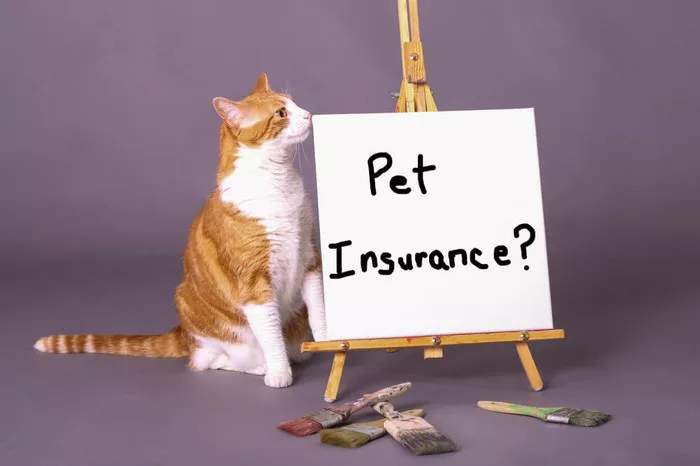Pet insurance is a valuable tool to help pet owners manage unexpected veterinary bills. However, like most types of insurance, pet insurance comes with an important term called “excess.” For pet owners new to insurance or those looking to better understand their policy, the concept of excess can sometimes be confusing.
So, how does excess work in pet insurance? And why is it important to know about it? In this article, we’ll explain the details of excess, how it affects your coverage, and the impact it can have on your finances. We’ll break everything down in simple terms to help you make informed decisions when selecting a pet insurance policy.
What is an Excess in Pet Insurance?
Excess, also known as a deductible, is the amount of money you have to pay toward a vet bill before your pet insurance policy covers the remaining costs. This means that whenever you submit a claim for your pet’s medical expenses, you will pay a certain amount of the bill out-of-pocket, while the insurance provider will cover the rest.
For example, if your pet’s treatment costs $500 and your excess is $100, you would pay the first $100. The insurance provider would then pay the remaining $400, as per the terms of your policy. The excess is subtracted from the total cost of the claim before the insurer takes over.
Why is Excess Used in Pet Insurance?
Excess serves a few important functions in the pet insurance industry:
Lower Premiums: Excess helps to lower your monthly premiums. By sharing part of the cost of treatment, the insurance company can offer you a more affordable policy. The higher the excess, the lower your premium typically is.
Preventing Small Claims: Excess discourages people from making small, unnecessary claims for minor vet visits or treatments. By requiring you to pay a certain amount out-of-pocket, insurers ensure that only more significant claims are made.
Managing Risk: Excess helps insurers manage their risk and avoid paying for minor claims, which helps keep insurance costs down for everyone.
Types of Excess in Pet Insurance
When choosing pet insurance, it’s important to understand that there are different types of excess. The amount you pay may vary depending on your policy. Below are the most common types of excess you might encounter:
1. Fixed Excess
A fixed excess is the most straightforward type. You pay a fixed amount for every claim, no matter the total cost of the treatment. For example, if you have a fixed excess of $100, you would pay $100 for each claim, regardless of whether the vet bill is $200 or $1,000.
This type of excess is easy to understand and works well for pet owners who prefer predictable costs when filing a claim.
2. Percentage Excess
With a percentage excess, you pay a percentage of the total cost of the claim. For example, if your vet bill is $1,000 and you have a 10% excess, you would pay $100. The remaining $900 would be covered by your insurance.
Percentage excesses are less common, but they are sometimes used by insurers, especially for more expensive treatments or surgeries. This type of excess can result in higher costs for expensive procedures but may be more affordable for minor treatments.
3. Per Condition Excess
A per-condition excess applies each time your pet is treated for a new illness or injury. For instance, if your pet gets sick and the treatment costs $500, you would pay the excess for that condition. If the pet develops a different illness later in the year, you would pay another excess for the second condition.
This type of excess is useful for pets with multiple health issues over time, as it ensures you’re only paying the excess for each new condition, rather than for each vet visit.
4. Annual Excess
Some policies feature an annual excess, meaning you only need to pay the excess once per policy year, regardless of how many claims you make. For example, if your policy has an annual excess of $200, you would pay this amount once during the year, and any claims made after that would not require another excess payment.
This type of excess is beneficial for pets that require multiple vet visits in a year, as it can help you save on out-of-pocket expenses for additional claims.
How Does Excess Affect Your Premiums?
One of the main ways excess influences your insurance is by affecting the cost of your premiums. The excess you choose directly impacts how much you’ll pay monthly or annually for your pet insurance policy.
Higher Excess, Lower Premiums
If you choose a higher excess, your monthly premiums will generally be lower. This is because you are agreeing to pay more out-of-pocket in the event of a claim, which reduces the risk for the insurance provider. For example, if you choose an excess of $200, you’ll likely pay less for your monthly premiums than someone who opts for a $50 excess.
Higher excess policies are often ideal for pet owners who don’t expect their pets to need frequent vet care. These policies can help you save money on premiums if you are comfortable paying the higher excess when the time comes.
Lower Excess, Higher Premiums
Conversely, if you choose a lower excess, your premiums will usually be higher. This is because the insurance company will need to cover a larger portion of any claims, so they adjust the premium to reflect this higher risk. For example, if you choose a low excess of $50, you may pay higher monthly premiums, but you’ll pay less if you need to make a claim.
Lower excess policies may be better for pet owners with pets that have ongoing medical needs or those who prefer predictable costs when filing a claim.
How Can Excess Affect Your Claim?
Understanding how excess works can help you determine how much you’ll need to pay when you make a claim. Here’s a breakdown of the steps involved when you file a claim and how excess impacts the process:
Submit Your Claim: You’ll pay your vet bill and then submit a claim to your insurance company for reimbursement. You will need to provide documentation of the treatment, such as a vet bill or medical records.
Excess Deducted: The insurance provider will assess your claim and subtract the excess amount. For example, if your vet bill is $500 and your excess is $100, you will pay $100, and the insurance company will reimburse you for the remaining $400, depending on your policy’s terms.
Reimbursement: The insurer will process the claim and reimburse you for the covered portion of the treatment. The amount reimbursed depends on the level of coverage in your policy, the reimbursement percentage, and the excess.
What Happens if You Can’t Afford the Excess?
One concern pet owners often have is whether they will be able to afford the excess in case of a large claim. While pet insurance helps cover the cost of veterinary care, you are still responsible for paying the excess upfront. If you are struggling to afford the excess, here are some options to consider:
Payment Plans: Some insurance companies or vets may allow you to set up payment plans to cover the excess. This can help spread the cost over a longer period, making it more manageable.
Lower Your Excess: If you have a high excess and are concerned about affordability, you may be able to adjust your policy to lower your excess in the future. This will likely increase your premiums, but it will reduce the amount you need to pay in the event of a claim.
Seek Financial Assistance: In some cases, you might qualify for financial assistance programs offered by charitable organizations or pet health foundations. These can help cover the cost of veterinary care and excess payments.
Can You Change Your Excess Amount?
In many cases, you can adjust the excess amount on your pet insurance policy. Some pet insurance providers allow you to change your excess when you renew your policy, while others may allow you to make adjustments during the policy term.
It’s important to understand that changing your excess can affect your premiums. Lowering your excess will likely increase your premiums, while raising your excess could reduce your monthly payments. Be sure to review your policy carefully and assess whether adjusting your excess aligns with your financial situation and your pet’s healthcare needs.
Is Excess Worth It?
For many pet owners, the decision to choose a higher excess and lower premiums makes sense, especially if their pet is generally healthy and doesn’t require frequent veterinary care. However, if you have a pet with ongoing medical conditions or one that is prone to accidents, a lower excess might be a better option, as it reduces the out-of-pocket costs you’ll face when you need to file a claim.
Ultimately, the choice of excess comes down to your pet’s individual needs and your financial situation. It’s important to carefully weigh the pros and cons of higher versus lower excess amounts to ensure you select the best option for you and your pet.
Conclusion
Excess is a fundamental concept in pet insurance that directly affects both your premiums and your out-of-pocket costs when you need to make a claim. By understanding how excess works, you can make informed decisions about the level of coverage you need and how much you’re willing to pay upfront.
Whether you choose a higher excess for lower premiums or a lower excess for more manageable costs, the key is to select an excess that works for your budget and your pet’s healthcare needs. By doing so, you’ll ensure that your pet’s insurance policy provides the protection you need without unnecessary financial strain.
Related topic:
What is the Best and Most Affordable Pet Insurance?


















